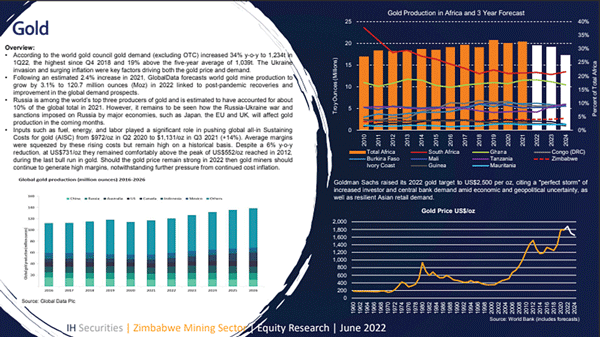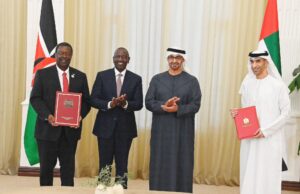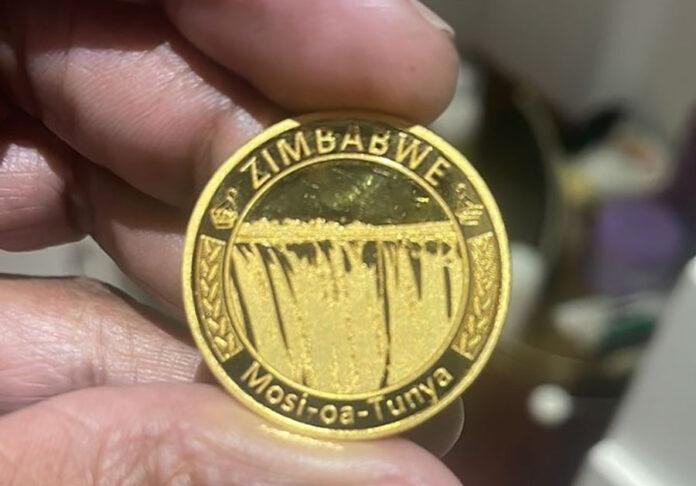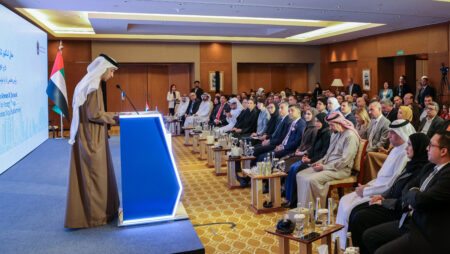- The new coins will be available for sale from July 25, 2022, in local currency, US dollars, and other foreign currencies
- The gold “Mosi-oa-tunya” coins, will contain one troy ounce of gold with a purity of 22 carats
- The coins will be sold through the Bank and its subsidiaries, Fidelity Gold Refinery (Private) Limited and Aurex (Private) Limited, local banks, and selected international banking partners
More than a fortnight ago, the Reserve Bank of Zimbabwe (RBZ) announced plans to introduce gold coins following a resolution agreed on by the bank’s Monetary Policy Committee (MPC) as a new investment instrument that also doubles up as a store of value for local investors.
In a statement, the Central Bank Governor, Dr. John Mangudya announced the features and characteristics of gold coins which are to be introduced soon.
The gold “Mosi-oa-tunya” coins, named after Victoria Falls, will contain one troy ounce of gold (around 31 grams) and can be converted into cash and traded both locally and internationally, the central bank said.
“The gold coin shall be called the Mosi-Oa-Tunya Gold Coin with the following characteristics;”
(i) Weight — one troy ounce.
(ii) Purity — 22 carats.
(iii) Identification — Each coin will have a serial number.
(iv) Ownership – Upon purchase, the buyer shall take physical possession of the coin and be issued with a Bearer Ownership Certificate. The buyer or holder of the coin may opt to place it in the custody of bankers of own choice in which case a safe custody certificate/receipt will also be issued.
(v) Liquidity and Tradability – The coin will have liquid asset status, that is, it will be capable of being easily converted to cash, and will be tradable locally and internationally. The coin may also be used for transactional purposes.
(vi) Prescribed Asset Status – The coin will have prescribed asset status and institutional investors can use it to meet regulatory requirements for prescribed asset investments.
(vii) Collateral — the coin can be used as security for loans and credit facilities.
(viii) Buy Back Arrangement — At the instance of the holder, the Bank will buy back the coin.
Zimbabwe is not the first country to introduce gold coins. According to Gold Bars Worldwide, countries with gold coins include South Africa with its Krugerrand gold coins, Australia has Australian Kangaroo, the United States has the American Eagle, Canada has the Maple Leaf and Austria has the Vienna Philharmonic. Krugerrands, for example, were first minted by the Republic of South Africa in 1967 to help promote South African gold to the international markets and to make it possible for individuals to own gold.
Krugerrands are among the most frequently traded gold coins in the world market.
According to the World Gold Council, central banks around the world are increasing the gold they hold in foreign exchange reserves, as they have built up their gold reserves by more than 4 500 tonnes over the past decade.
According to News Central, Zimbabwe’s gold output jumped 86.3% in the first five months of 2022 to 13,171,58kg compared to 7,068,85kg in the corresponding period last year.
Production figures by Fidelity Printers and Refiners, the country’s sole gold buyer, revealed that last month’s gold output by both small-scale and large-scale miners went up to 2,994,75kg compared to 1,668,01kg in the preceding year.
President Emmerson Mnangagwa announced at the chamber of Mines of Zimbabwe’s annual conference in Victoria Falls in June that the value of mineral output in the country was at US$6 billion from US$5.2 billion in 2021.

In October 2019, President Mnangagwa’s led-government launched the $12 billion mining industry roadmap from which the gold sub-sector is expected to contribute $4 billion.
According to an article by Mining Zimbabwe published on June 8, 2022, as part of efforts to empower prospective and productive miners in the country, the Government through the Ministry of Mines and Mining Development was implementing the use-it or lose-it policy.
Under phase 1 of the program to repossess idle mining claims, the Government targeted repossessing 213 concessions but the initiative was being bogged down by some mining title holders who have approached the courts to interdict the process. In 2021, over 80 mining claims out of the 213 identified idle mining titles were repossessed.
The new coins will be available for sale from 25 July in local currency, US dollars, and other foreign currencies at a price based on the prevailing international price of gold and the cost of production.
“The gold coins will be available for sale to the public from 25 July 2022 in both local currency (ZW$) and United States Dollars (US$) (and other foreign currencies) at a price based on the prevailing international price of gold and the cost of production. The coins will be sold through the Bank and its subsidiaries, Fidelity Gold Refinery (Private) Limited and Aurex (Private) Limited, local banks, and selected international banking partners. Entities selling the coins shall be required to apply to Know Your Customer (KYC) principles,” read the statement.
Aurex Private, a subsidiary of the central bank, is involved in diamond cutting and polishing over and above the manufacturing of jewellery.
According to an article by Newsday dated June 8, 2015, the central bank spent $1 million modernizing equipment for Aurex Private Limited as it moved to start beneficiation of diamonds.
Aurex was revived in March 2015, having stopped operating during the hyperinflationary environment.
Mangudya said the bank began cutting and polishing diamonds with a budget of $1 million in 2015. Zimbabwe discovered alluvial diamonds in 2008 and it was believed that the country accounts for 25% of the world’s diamonds.
“We are modernizing the equipment for the full house of diamond cutting and polishing. We aim to beneficiate and produce goods and create employment,” he said.
Despite the vast reserves, there was nothing to show for it as unpolished diamonds were sold outside creating employment in the buyers’ countries through cutting and polishing.
Mangudya said RBZ had resumed operations for the Export Credit Guarantee Corporation (ECGC) — a player in the export sector and a critical part in the growth of small and medium-scale enterprises.
ECGC offers various products including credit insurance and guarantee services which enable exporters to compete more effectively in export markets, export payments insurance policy, export finance guarantee, general insurance, invoice discounting for exporters, lines of credit cover, suppliers and buyers’ credit insurance cover, domestic credit insurance, and Zimbabwe Revenue Authority bonds.
The bank’s subsidiaries include Fidelity Printers and Refiners (FPR), Homelink which is made up of four business units, namely Proplink, Easylink Money Transfer (Pvt) Ltd, Investlink, and Masterlink Capital Services (Pvt) Ltd to serve the economy.











